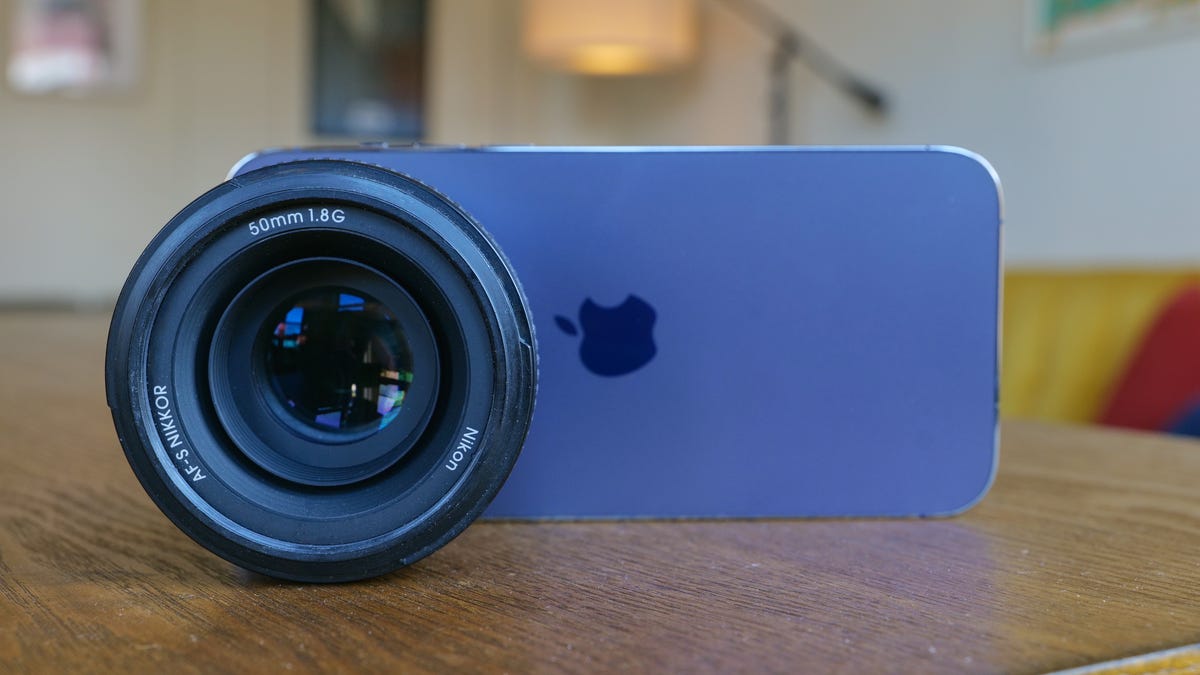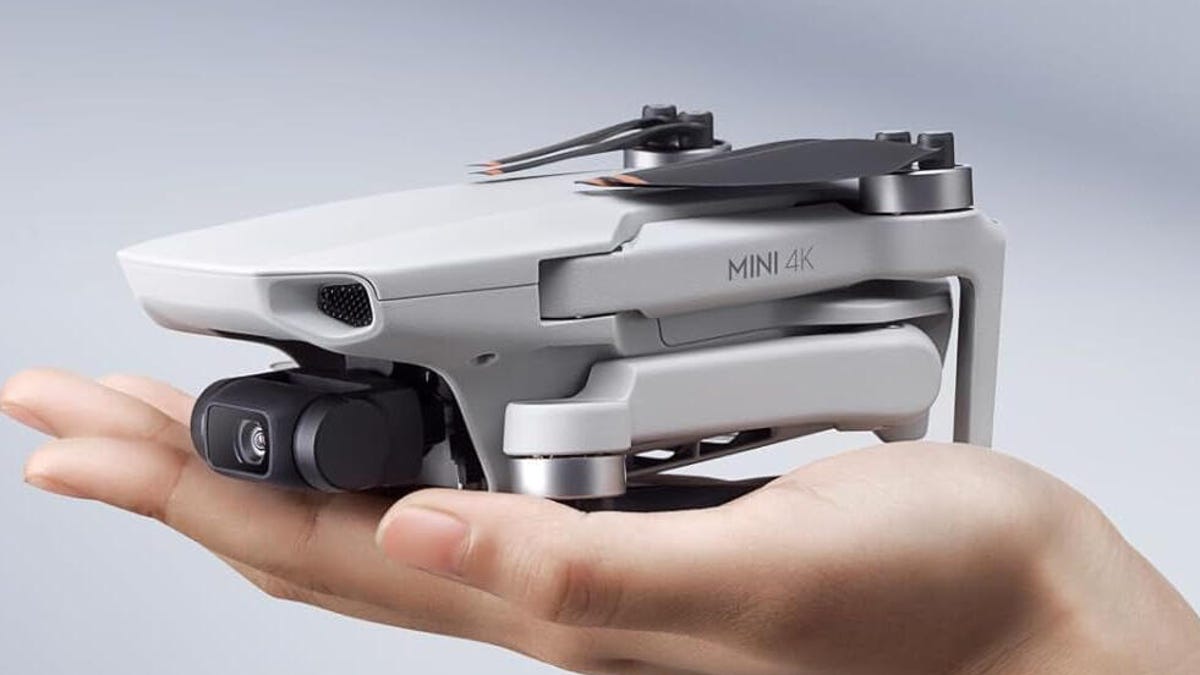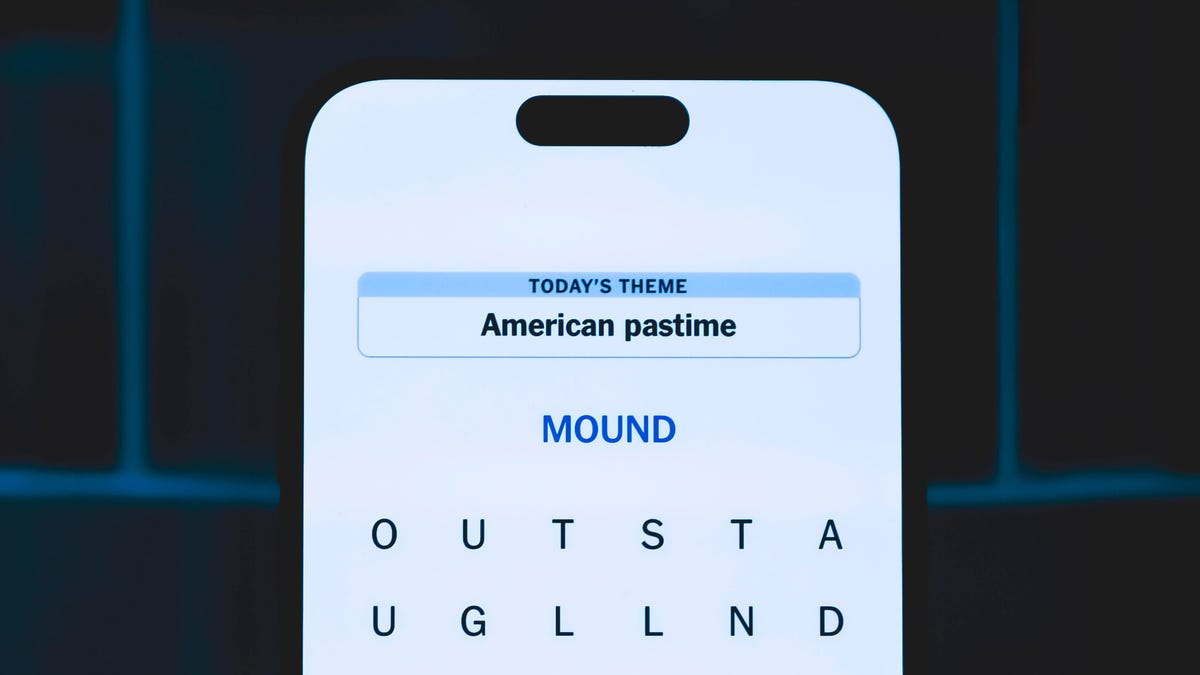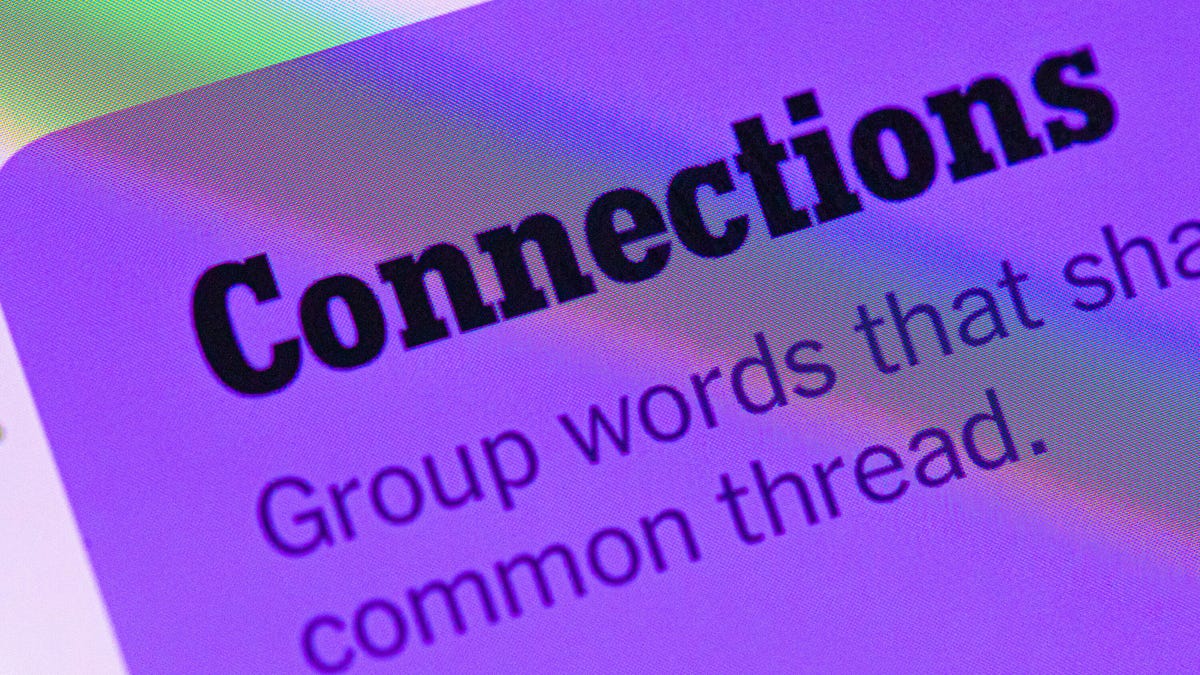Technologies
A Decade Later, Your Phone Still Does Not Replace a Pro Camera
Commentary: Phone cameras are getting better and better, but they still aren’t much closer to replacing dSLRs and professional mirrorless cameras.

On a chilly Saturday afternoon in San Francisco, I was under a patio heater with a group of friends when someone said we should get a group photo. What happened next was surprising. Instead of using his phone to take a commemorative photo, my friend pulled out a point-and-shoot camera. I thought to myself, «Wait. The phone killed the point-and-shoot camera years ago. Why didn’t he just use his iPhone?» Granted it was the high-end Sony RX100 VII, which is an excellent compact camera and one of the few point-and-shoots still made today.
Phones from Apple, Samsung and Google include some of the best phone cameras you can buy, like the iPhone 14 Pro, Google Pixel 7 Pro and Samsung Galaxy S22 Ultra. But for professional photographers and filmmakers, that’s not always enough. The holy grail is being able to have a truly large image sensor like the one you’d find in a high-end mirrorless camera and a lens mount that could attach to your phone. Sounds simple enough right? Wrong.
Everyone from Samsung to Panasonic, Sony and Motorola has tried to make this dream a reality in some way. Now Xiaomi, the world’s third largest phone-maker (behind Samsung and Apple) is the latest to rekindle the quest for the phone camera holy grail. The company has a new prototype phone that lets you mount a Leica M lens on it.
But this is just a concept. If you’re wondering whether phones will ever make dedicated pro cameras obsolete the way they did with point-and-shoots, the answer is a resounding no. The past decade has shown us why.
Why phone cameras are limited
First, it’s important to understand how your phone’s camera works. Behind the lens is a tiny image sensor, smaller than a single Lego brick. Sometimes there are headlines that Sony, Sharp or, years ago, Panasonic put a 1-inch sensor in a phone. Sadly, that name doesn’t refer to the actual dimensions and in reality, a 1-inch image sensor is about 0.6 of an inch diagonally or, for the sake of approximation, two Lego bricks. The 1-inch sensor is the hoverboard of cameras, but it’s still one of the largest to be put into a phone.
Dedicated cameras have sensors that are closer to 12 Lego bricks (positioned side-by-side in a four-by-three rectangle) and most come with a lens mount that lets you change lenses. The «holy grail» is to put one of these larger sensors into a phone.
But bigger sensors are more expensive than the little ones used in your iPhone and there are space considerations. A lens for a phone camera sensor is relatively small. But lenses for a full-frame sensor are larger and require more space between the back of the lens and the sensor. Phones simply lack this room without becoming significantly thicker.
Every year we see Apple, Samsung and the like take small steps toward improving phone photography. But phone camera hardware has largely hit a ceiling. Instead of radical camera improvements, we get modest upgrades. This could be a sign that companies have honed in on what consumers want. But it could also be a consequence of space and size limitations of tiny sensors.
Instead smartphone-makers use computational photography to overcome a tiny sensor’s limitations — smaller dynamic range and light sensitivity. Google, Apple, Samsung all use machine learning algorithms and artificial intelligence to improve the photos you take with your phone.
But hardware is also important. Earlier this month Tim Cook, Apple’s CEO, shared a photo on Twitter, above, of a visit to Sony in Japan. While it’s been widely assumed that Apple uses Sony’s image sensors in the iPhone, this is the first time Cook formally acknowledged it. And as CNET readers already know, Sony phones like the Xperia 1 IV have some of the best camera hardware found on any phone sold today.
The Xperia 1 IV won a CNET Innovation award for its telephoto camera, which has miniature lens elements that actually move back and forth, like a real telephoto lens. The result is that you can use the lens to zoom without cropping digitally, which degrades the image. Can you imagine an iPhone 15 Pro with this lens?
The Xiaomi 12S Ultra Leica lens prototype is so 2013
That brings us to Xiaomi, which is the latest company attempting to merge pro-level cameras with your phone. In November, Xiaomi released a video of a phone camera concept that shows a Leica lens mounted on a 12S Ultra phone. This prototype is like a concept car: No matter how cool it is, you’ll never get to drive it.
The Chinese company took the 12S Ultra and added a removable ring around its circular camera bump. The ring covers a thread around the outside edge of the camera bump onto which you can attach an adapter that lets you mount Leica M lenses. The adapter’s thickness is the same distance that a Leica M lens needs to be positioned away from the sensor in order to focus.
A few caveats: The Xiaomi 12S Ultra concept uses an exposed 1-inch sensor, which as I mentioned earlier, isn’t actually 1-inch. Next, this is purely a concept. If something like this actually went on sale, it would cost thousands of dollars. A nice dedicated camera like the Fujifilm X100 V, which has a much bigger sensor, costs $1,399 in comparison.
Xiaomi isn’t the first phone-maker to try this. In 2013, Sony took an image sensor and put it on the back of a lens that has a grip to attach to the back of a phone. The idea is to use your phone’s screen as the viewfinder for the camera system, which you can control through an app. Essentially you bypass your phone’s cameras.
Sony made several different versions of this «lens with a grip» and used sensors that were just a bit bigger than those found in phone cameras. Sony also made the QX-1 camera, which had an APS-C sized sensor that in our Lego approximation is about six bricks positioned side-by-side in a three-by-two rectangle. That’s not as large as a full-frame sensor, but vastly bigger than your phone’s image sensors.
The Sony QX-1 has a Sony E-mount, meaning you can use various E-mount lenses or use adapters for Canon or Nikon lenses. Because the QX-1 is controlled with Bluetooth, you could either attach it to your phone or put it in different places to take photos remotely.
The QX-1 came out in 2014 and cost $350. Imagine having something like this today? I would definitely buy a 2022 version if Sony made it, but sadly the QX-1 was disconitntued a few years after it went on sale. That’s around the time that Red, the company that makes cinema cameras used to film shows and movies like The Hobbit, The Witcher, Midsommar and The Boys, made a phone called the Red Hydrogen One.
Despite being a phone made by one of the best camera companies in the world, the $1,300 Red Hydrogen One’s cameras were on par with those from a $700 Android phone. The back of the phone had pogo pins designed to attach different modules (like Moto Mods), including a «cinema camera module» that housed a large image sensor and a lens mount, according to patent drawings. The idea is that you would use a Hydrogen One and the cinema mod to turn the phone into a mini-Red cinema camera.
Well, that never happened.
The Red Hydrogen One was discontinued and now shows up as a phone prop in films like F9, on the dashboard of Dominic Toretto’s car or in the hands of Leonard DiCaprio in Don’t Look Up.
2023 will show that pro cameras won’t be killed off by our phones
There aren’t any rumors that Apple is making an iPhone with a camera lens mount, nor are there murmurs of a Google mirrorless camera. But if Xiaomi made a prototype of a phone with a professional lens mount, you have to imagine that somewhere in the basement of Apple Park sits an old concept camera that runs an iOS-like interface, is powered by the iPhone’s A-series chip and able to use some of the same computational photography processing. Or at least that’s what I’d like to believe.
How amazing would photos look from a pro-level dedicated camera that uses the same processing tricks that Apple or Google implement on their phones? And how nice would it be to have a phone-like OS to share those photos and videos to Instagram or TikTok?
Turns out, Samsung tried bringing an Android phone’s interface to a camera in 2012. Noticing a theme here? Most of these holy grail phone camera concepts were tried 10 years ago. A few of these, like the Sony QX-1, were truly ahead of their time.
I don’t think Apple will ever release a standalone iOS-powered camera or make an iPhone with a Leica lens mount. The truth is that over the past decade, cameras have gotten smaller. The bulky dSLRs that signified professional cameras for years are quickly heading into the sunset. Mirrorless cameras have risen in popularity. They tend to be smaller, since they don’t need the space for a dSLR mirror box.
If there is a takeaway from all of this, it’s just a reminder of how good the cameras on our phones have gotten in that time. Even if it feels like they’ve plateaued, they’re dependable for most everyday tasks. But they won’t be replacing professional cameras anytime soon.
If you want to step up into a professional camera, find one like the Fujifilm X100 V or Sony A7C, that pack a large image sensor, a sharp lens and can fit into a coat pocket. And next time I’m at a dinner party with friends, I won’t act so shocked when someone wants to take a picture with a camera instead of a phone.
Read more: Pixel 7 Pro Actually Challenges My $10,000 DSLR Camera Setup
Technologies
What a Ban Would Actually Mean for DJI Drone Owners and Holiday Shoppers
What’s the secret to a very un-merry shopping season? A brand new, unusable drone.

With Thanksgiving wrapped up and the Black Friday shopping sales here, if a DJI drone is on your holiday wish list, you might want to hit «buy» immediately. The company has issued a stark warning: Its drones could be banned from sale in the US, and the deadline is looming.
The Federal Communications Commission voted 3-0 at the end of October to «close loopholes» that allow tech deemed a «national security risk» to be sold in the US. In plain English, the US government is clearing the path to give DJI the same treatment it gave Chinese phone-maker Huawei, effectively banning its products from the American market.
The US government has deemed DJI, which is based in China, a security risk. It’s also considering a separate ban on TP-Link routers.
DJI is already sounding the alarm, posting on Instagram that a «deadline that could decide DJI’s fate in the US is just 43 days away» (now 19 days away). The company is warning that without an audit, its products could face an «automatic ban.» The US government has long labeled the Chinese drone maker a security risk, and it looks like the hammer might finally be coming down right before the holidays.
Don’t miss any of our unbiased tech content and lab-based reviews. Add CNET as a preferred Google source.
The vote isn’t the end of the road, however. Future bans would need to target specific products and would require a period of public consultation. But it appears the groundwork is being set for the FCC to block sales of future and some existing DJI drones from US shores, as well as products that use DJI technology.
The government has called for a DJI audit by the end of the year, but if that doesn’t happen, DJI drone products could be banned for sale by default under a national security law.
DJI asks for a security audit before any ban
A representative for DJI told CNET that while the FCC vote references a rule change that doesn’t currently apply to DJI specifically, the National Defense Authorization Act deadline in December would put Chinese companies like it on the FCC’s ban list, «without any evidence of wrongdoing or the right to appeal.»
Adam Welsh, head of global policy at DJI, said the company has repeatedly said it would be open to audit, but that «more than 10 months have now passed with no sign that the process has begun.»
«The US government has every right to strengthen national security measures, but this must go hand in hand with due process, fairness, and transparency,» Welsh said.
Welsh said DJI is urging the government to start the audit process or grant an extension.
Will DJI drone owners need to give them up?
Because the ban would apply to new sales, not drones that have already been sold, a DJI drone you already own would still be legal to use — at least under current rules.
Government agencies, however, are prohibited from purchasing or using drones from Chinese companies, including DJI.
DJI’s drones consistently rank high in their product category. In January, they dominated CNET’s list of best drones for 2025. But some of the company’s newest products, such as the DJI Mavic 4 Pro, haven’t been available for sale in the United States.
Even DJI products that are not yet banned may be hard to find. The website UAV Coach has posted a guide to the bans and reports that, due to inventory issues, most DJI drone models are sold out at retailers regardless of future FCC action.
Technologies
Today’s NYT Strands Hints, Answers and Help for Nov. 29 #636
Here are hints and answers for the NYT Strands puzzle for Nov. 29, No. 636.

Looking for the most recent Strands answer? Click here for our daily Strands hints, as well as our daily answers and hints for The New York Times Mini Crossword, Wordle, Connections and Connections: Sports Edition puzzles.
Today’s NYT Strands puzzle is a real puzzler. Some of the answers are difficult to unscramble, so if you need hints and answers, read on.
I go into depth about the rules for Strands in this story.
If you’re looking for today’s Wordle, Connections and Mini Crossword answers, you can visit CNET’s NYT puzzle hints page.
Read more: NYT Connections Turns 1: These Are the 5 Toughest Puzzles So Far
Hint for today’s Strands puzzle
Today’s Strands theme is: What a piece of work!
If that doesn’t help you, here’s a clue: You can build it in a shop.
Clue words to unlock in-game hints
Your goal is to find hidden words that fit the puzzle’s theme. If you’re stuck, find any words you can. Every time you find three words of four letters or more, Strands will reveal one of the theme words. These are the words I used to get those hints but any words of four or more letters that you find will work:
- CREW, REAM, LANE, WHEE, DELL, CANE, PULL, REVEL
Answers for today’s Strands puzzle
These are the answers that tie into the theme. The goal of the puzzle is to find them all, including the spangram, a theme word that reaches from one side of the puzzle to the other. When you have all of them (I originally thought there were always eight but learned that the number can vary), every letter on the board will be used. Here are the nonspangram answers:
- WHEEL, AXLE, LEVER, WEDGE, PLANE, PULLEY, SCREW
Today’s Strands spangram
Today’s Strands spangram is SIMPLEMACHINE. To find it, start with the S that’s three letters to the right on the top row, and wind over and down.
Technologies
Today’s NYT Connections Hints, Answers and Help for Nov. 29, #902
Here are some hints and the answers for the NYT Connections puzzle for Nov. 29, #902.

Looking for the most recent Connections answers? Click here for today’s Connections hints, as well as our daily answers and hints for The New York Times Mini Crossword, Wordle, Connections: Sports Edition and Strands puzzles.
Today’s NYT Connections puzzle is tough. If you need help sorting them into groups, you’re in the right place. Read on for clues and today’s Connections answers.
The Times now has a Connections Bot, like the one for Wordle. Go there after you play to receive a numeric score and to have the program analyze your answers. Players who are registered with the Times Games section can now nerd out by following their progress, including the number of puzzles completed, win rate, number of times they nabbed a perfect score and their win streak.
Read more: Hints, Tips and Strategies to Help You Win at NYT Connections Every Time
Hints for today’s Connections groups
Here are four hints for the groupings in today’s Connections puzzle, ranked from the easiest yellow group to the tough (and sometimes bizarre) purple group.
Yellow group hint: Middle of the body.
Green group hint: Fill-in.
Blue group hint: Nice place to hang out.
Purple group hint: Card game.
Answers for today’s Connections groups
Yellow group: Abdominal area.
Green group: Replacement.
Blue group: Park staples.
Purple group: Blackjack terms.
Read more: Wordle Cheat Sheet: Here Are the Most Popular Letters Used in English Words
What are today’s Connections answers?
The yellow words in today’s Connections
The theme is abdominal area. The four answers are core, midsection, torso and trunk.
The green words in today’s Connections
The theme is replacement. The four answers are backup, cover, relief and substitute.
The blue words in today’s Connections
The theme is park staples. The four answers are bench, pigeon, statue and tree.
The purple words in today’s Connections
The theme is blackjack terms. The four answers are bust, hit, split and stand.
-

 Technologies3 года ago
Technologies3 года agoTech Companies Need to Be Held Accountable for Security, Experts Say
-

 Technologies3 года ago
Technologies3 года agoBest Handheld Game Console in 2023
-

 Technologies3 года ago
Technologies3 года agoTighten Up Your VR Game With the Best Head Straps for Quest 2
-

 Technologies4 года ago
Technologies4 года agoBlack Friday 2021: The best deals on TVs, headphones, kitchenware, and more
-

 Technologies4 года ago
Technologies4 года agoVerum, Wickr and Threema: next generation secured messengers
-

 Technologies4 года ago
Technologies4 года agoGoogle to require vaccinations as Silicon Valley rethinks return-to-office policies
-

 Technologies4 года ago
Technologies4 года agoOlivia Harlan Dekker for Verum Messenger
-

 Technologies4 года ago
Technologies4 года agoiPhone 13 event: How to watch Apple’s big announcement tomorrow
